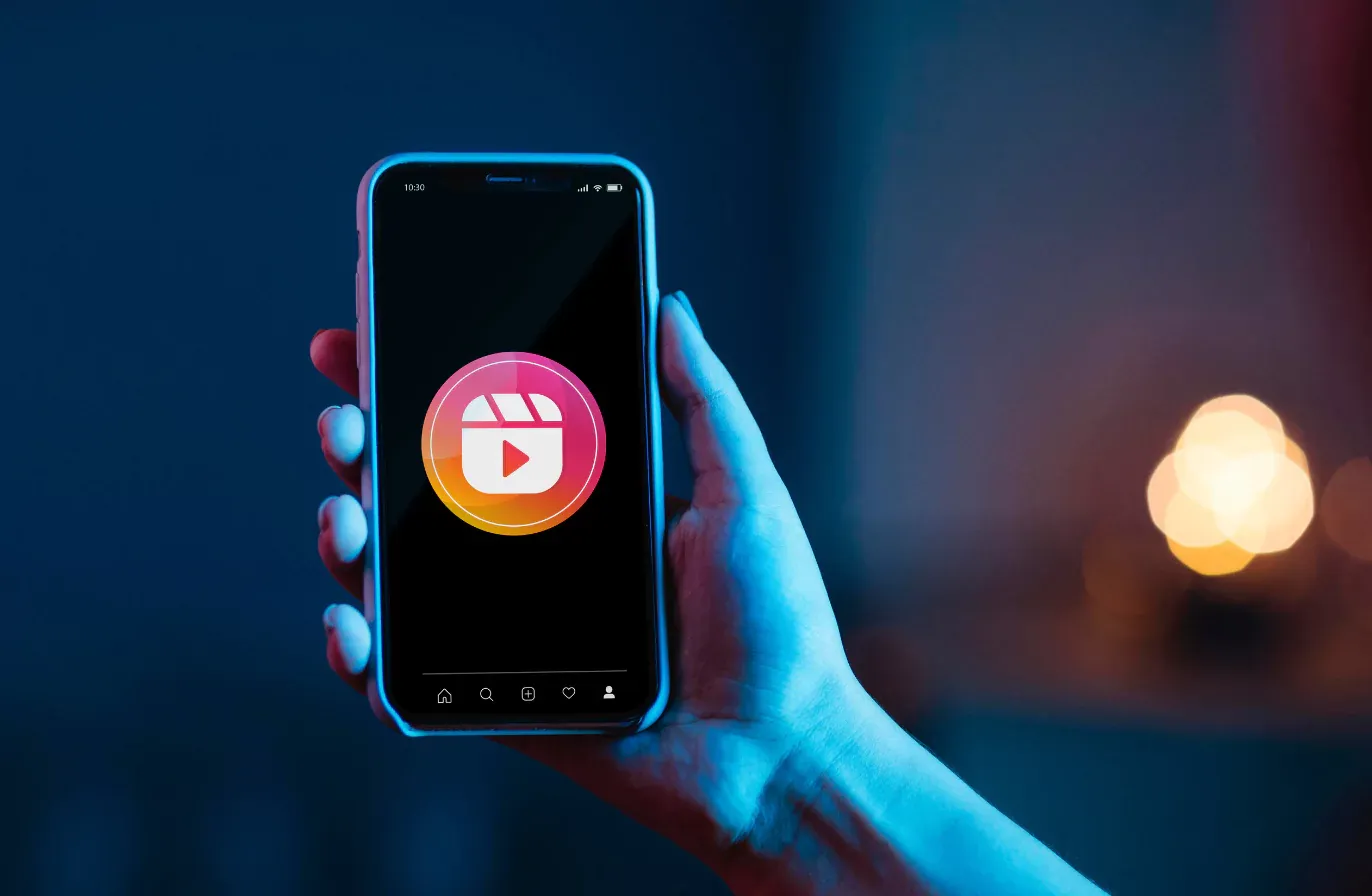Reel vs Story: When and How to Use Each Content Format
Trying to understand when to use Reels vs Stories? Discover the differences between them and find out which is best suited for different needs.
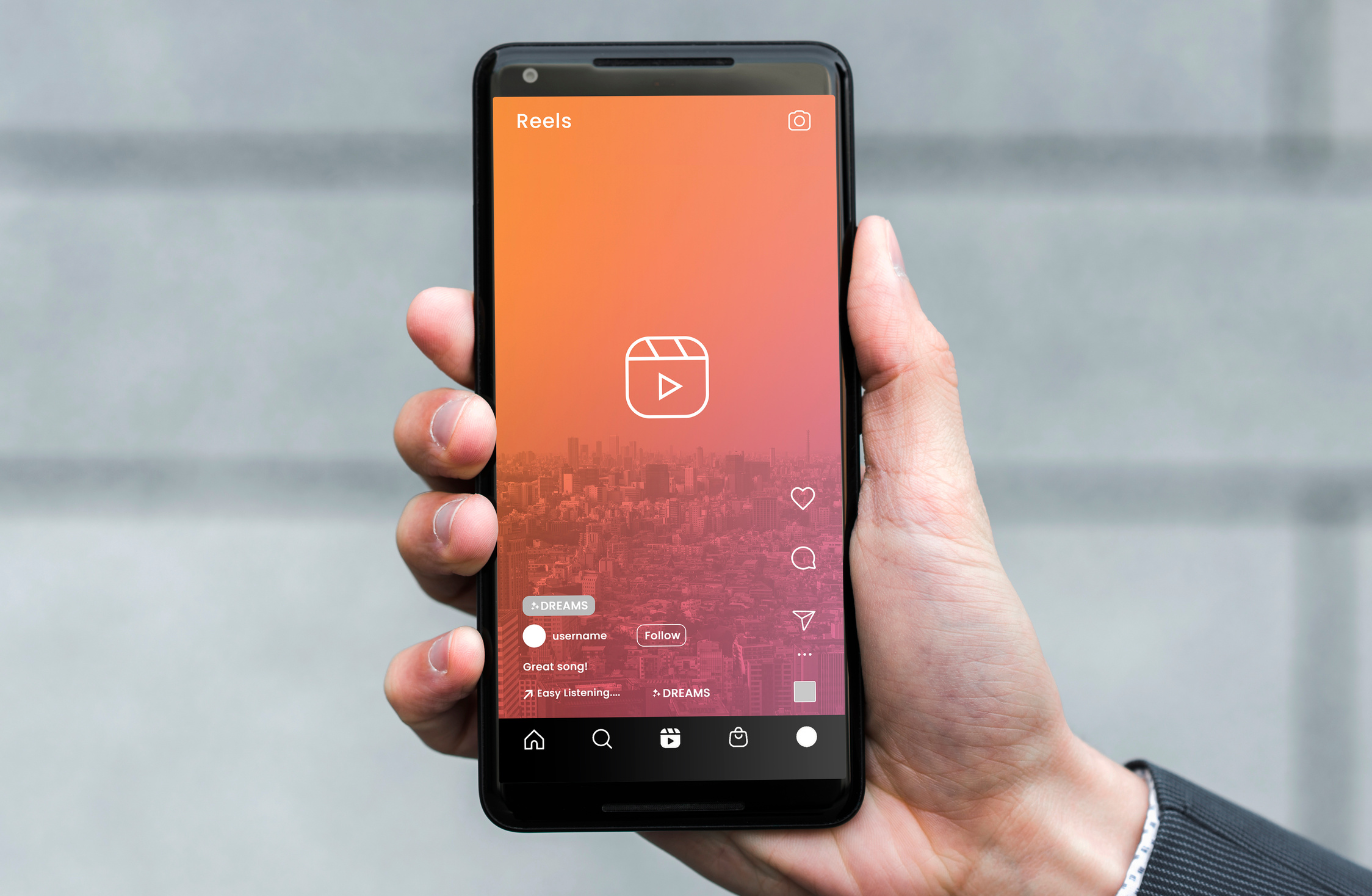
You discovered a great social media content idea.
While you added it to your content bank, you are still unsure— should I turn it into an Instagram Reel or put it up as a Story?
The best brands know Instagram marketing isn’t just about stellar content ideas. It involves choosing the right format for each idea.
Whether you want to know which gets higher engagement or when to use reels vs stories on Instagram, you’ve come to the right place.
In this guide, we’ll help you understand the difference between a story and a reel and how to use both to steer your social media strategy in the right direction.
Reels vs Stories on Instagram: main differences
Before we dive in with specifics for each content format, here's a quick rundown of the main differences between Instagram Reels and Stories.
Instagram Story
Instagram Stories allows users to post a short video or a series of photos. They only last for 24 hours and are perfect for sharing daily moments with your followers.
The feature's core purpose is to nurture relationships. By using them, you can ask your audience questions, give them updates, and build two-way communication. For example, you can share a Story about a new feature update and ask their opinion.
Some of the core features you can utilize while creating an Instagram story are:
- Polls: Create interactive polls to gather opinions from your audience.
- Link insertions: Add clickable links to direct viewers to your website or online store.
- Questions: Use the "Questions" sticker to let followers send you questions or feedback directly.
- Quizzes: Create multiple-choice quizzes with correct answers to boost engagement.
- Music: Add popular music tracks to your stories with lyrics or album art visible as a sticker.
- Hashtags: Use hashtags to make stories discoverable to a broader audience.
- Sliders: Add emoji sliders to let followers rate their opinions on a scale.
Instagram Reels
An Instagram Reel is a short video. Its maximum length can be 90 seconds, and it can be displayed both on the main feed as well as in the Reels dedicated tab.
While Stories are great for fostering connections, Reels serve another purpose, being a type of content that performs exceptionally well, especially when talking about generating brand awareness.
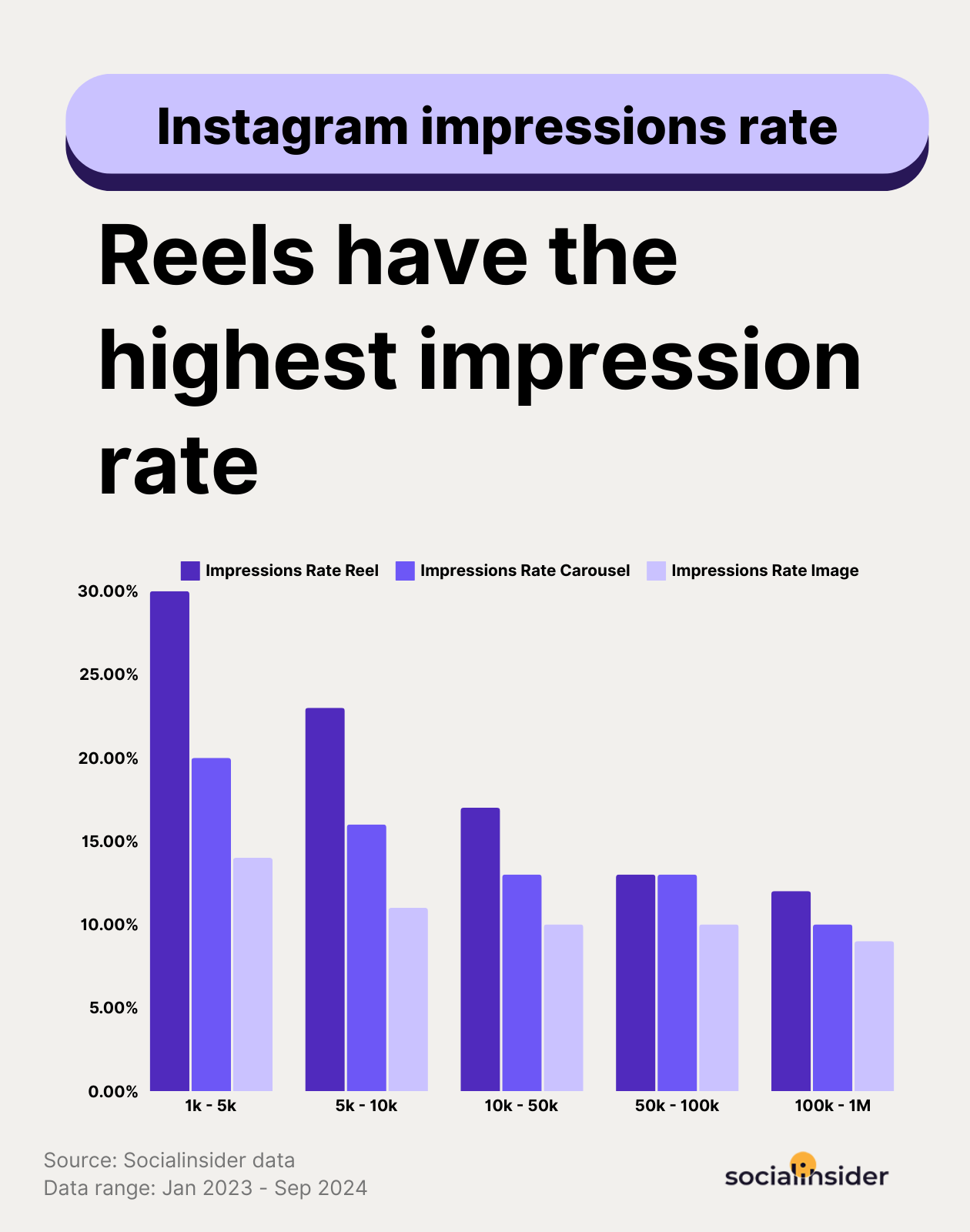
Some of the core features/characteristics of Instagram Reels:
- Dedicated feed: A specific section for Reels on your Instagram profile
- Trending audio: Use popular audio tracks or music from Instagram's library to enhance your content.
- Video editing: Trim, split, and edit clips directly within the app.
- Align: Seamlessly transition between clips with the align feature for smoother cuts.
- Speed control: Adjust the playback speed of your video, including slow motion and fast-forward options.
- Collabs: Partner with other creators to co-create a Reel.
- Duet/Remix: Create split-screen videos to react to or collaborate with another Reel.
- Subtitles: Automatically or manually add captions to make videos accessible to a broader audience, including those watching without sound.
Instagram Reels and Stories: video views comparison
To prove the point mentioned earlier, we dug through the data to see if, when it comes to brand discovery, Reels are indeed leading the way and how far behind Instagram Stories are for this particular goal.
Below, you'll find a comparison in terms of the average video view rate for Reels vs Stories.
And with data indicating that Reels have a double video view rate compared to Stories, I'd say we've made our point.
To help out a fellow marketer, if you are wondering how this translates in terms of actual view numbers, let me give you some benchmarks as well.
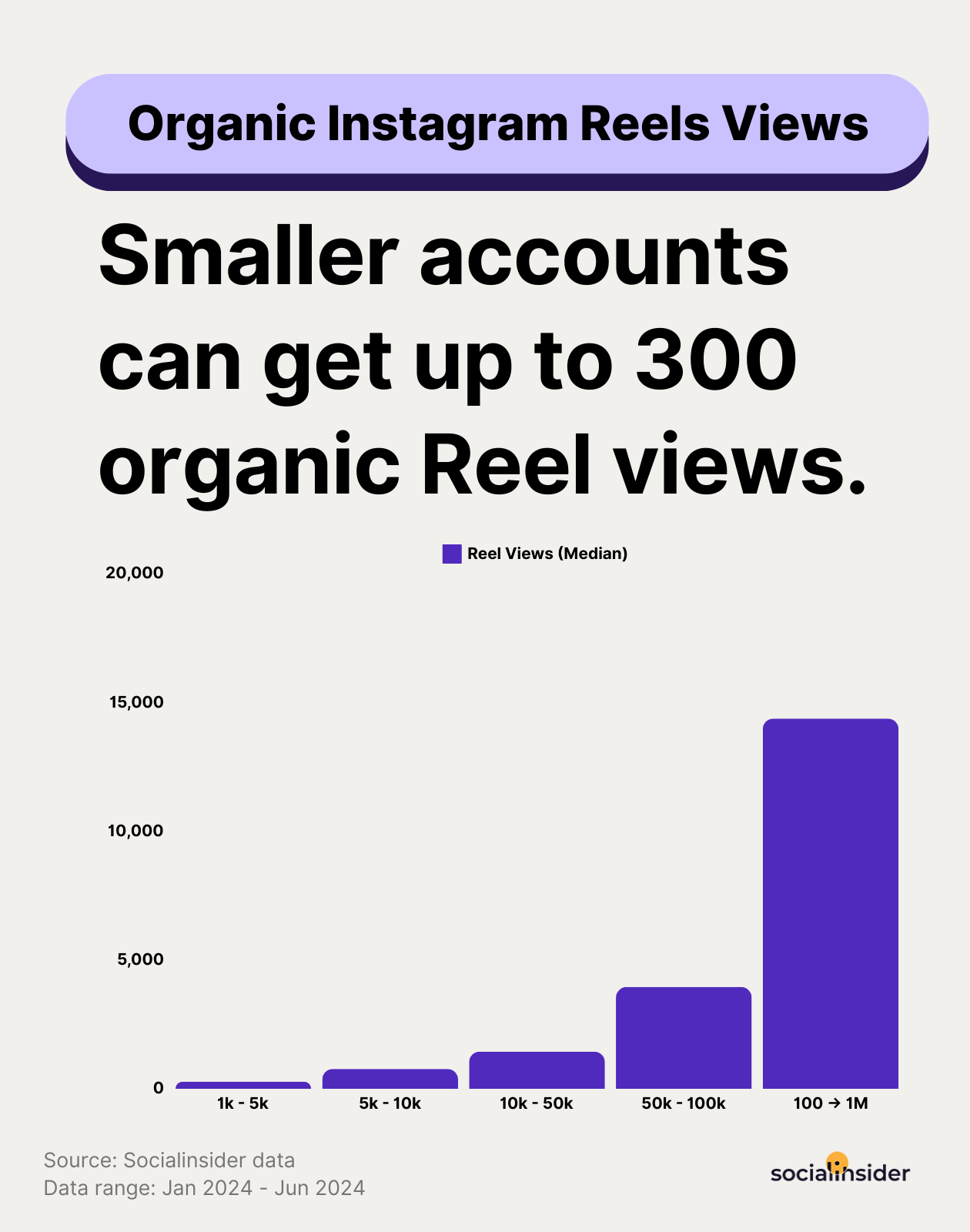
When to post Instagram Reels vs Stories?
Some ideas are great for a quick Story to engage your followers. While some are better suited for Reels that reach a wider audience.
Below are six situations where we recommend creating Reels vs Stories.
Building brand visibility
According to a survey by Morgan Stanley, 74% of Instagram users use the Reels feature. Additionally, there’s a growing trend in the number of people watching Reels.
Think about it. How often have you opened Instagram, clicked on the Reels section, and mindlessly scrolled for hours? Countless times, rights?
That’s why Reels are great for getting your brand across to people. While B2B brands create educational content that shows your product in action, we also recommend mixing it with light, funny content that showcases your brand’s personality.
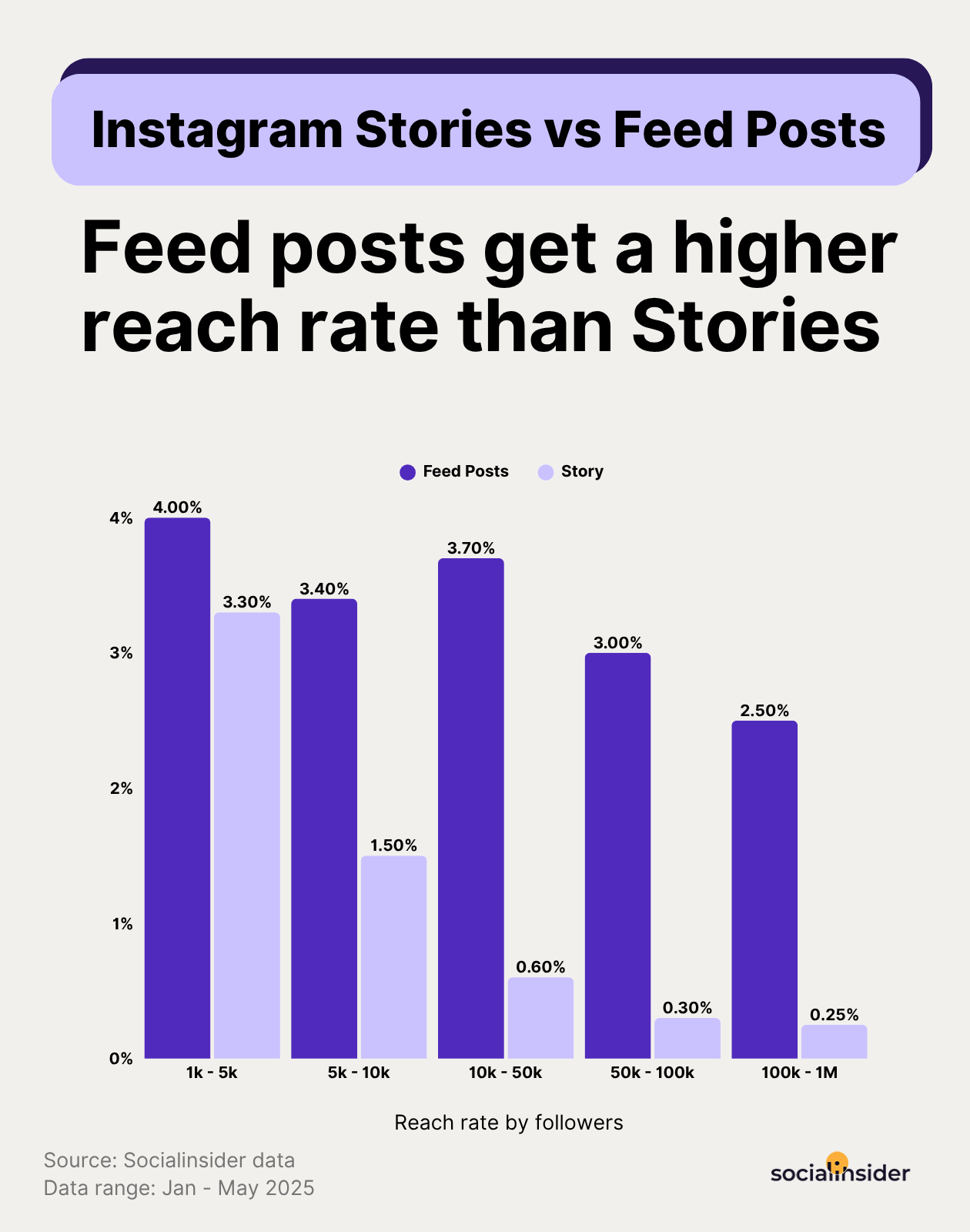
Tapping into trends
Discovered an engaging trend for your audience? Wondering whether it should be an Instagram reel or story?
We believe you should pick Reels. Instagram Reels are great for covering trending topics. This could mean talking about new technology in your niche, new processes that are trending, some fun challenges that your audience would love, or a viral meme that you can replicate.
Here’s how you can use Reels to cover trending topics:
- Monitor trends: Keep an eye on trending hashtags, audio, and challenges via the Reels feed and Explore page.
- Act fast: Post while the trend is still hot to maximize visibility.
- Add your spin: Adapt the trend to fit your brand's style or message for authenticity.
- Use trending audio: Incorporate popular music or sounds to boost discoverability.
- Engage viewers: Add call-to-actions like “What do you think?” or “Try this!” to drive interaction.
Pro tip: Choose trends that align with your brand identity to avoid appearing out of place.
Creating educational content
Educational Reels are a great way to provide value to your audience. You can share step-by-step tutorials, tips, feature breakdowns, product use cases, and real-life customer stories.
The best part? Unlike Stories, Educational Reels can be saved and watched whenever needed. This makes it more valuable to your audience, and you can keep drawing them to your brand.
Important to remember: focus on one clear takeaway per Reel.
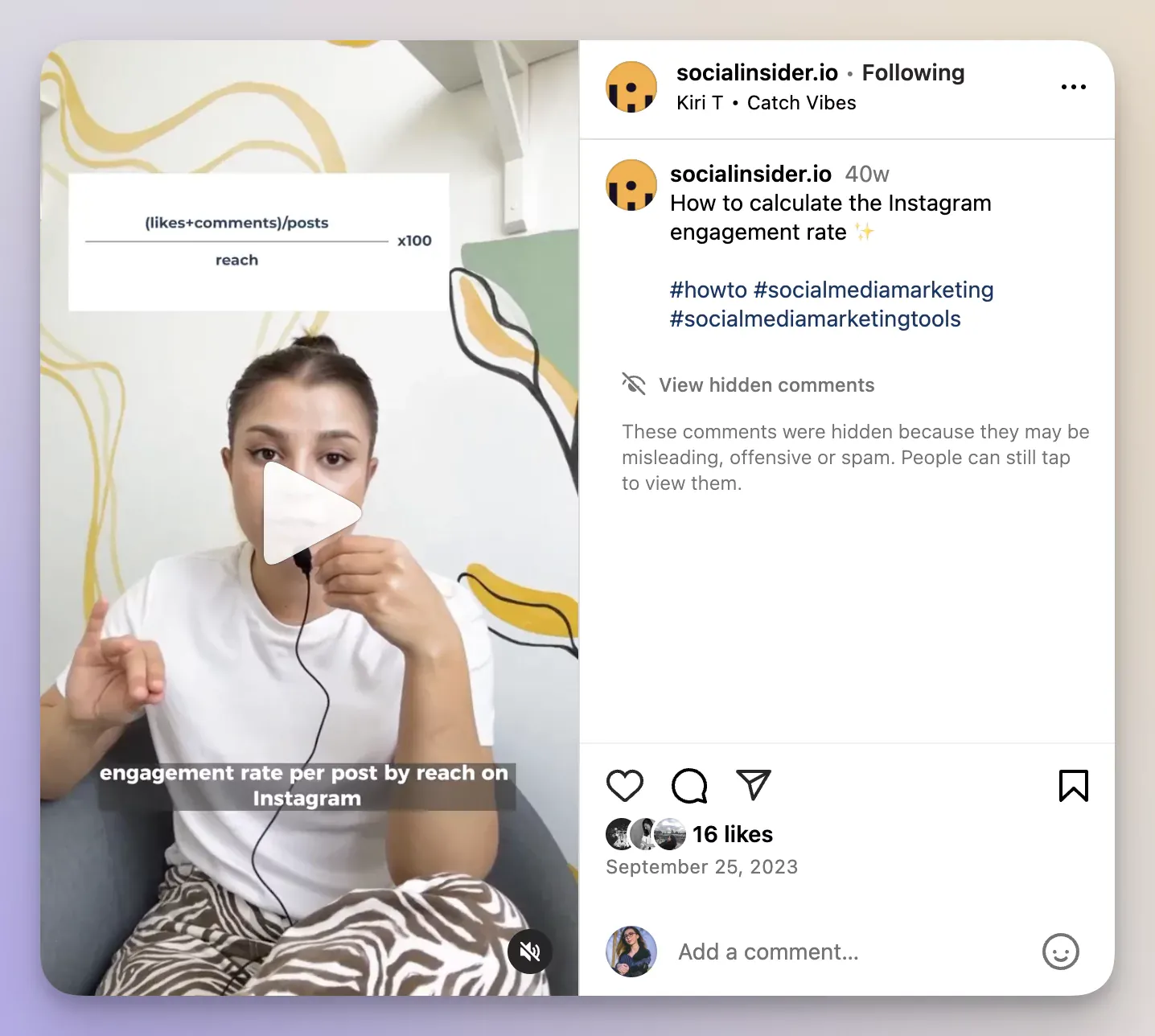
You can use visuals, text overlays, or quick demonstrations to make the information digestible. Keep it engaging with dynamic transitions and trending audio.
Showcasing brand personality
Think about your favorite brands. Do they post educational content on Instagram Reels or Stories? Probably both.
But do they also infuse their personality in their reels? Absolutely. It could be the brand posting comedy content around their team. Or the CEO taking the storytelling approach to connect emotionally with their audience.
At the end of the day, people want to connect with brands that showcase their real, human, side. Reels offer the best medium to demonstrate this other side while engaging the audience.
For example, a carousel demonstrating why your brand picked sustainable processes wouldn’t be as powerful as a reel that can actually show the process.
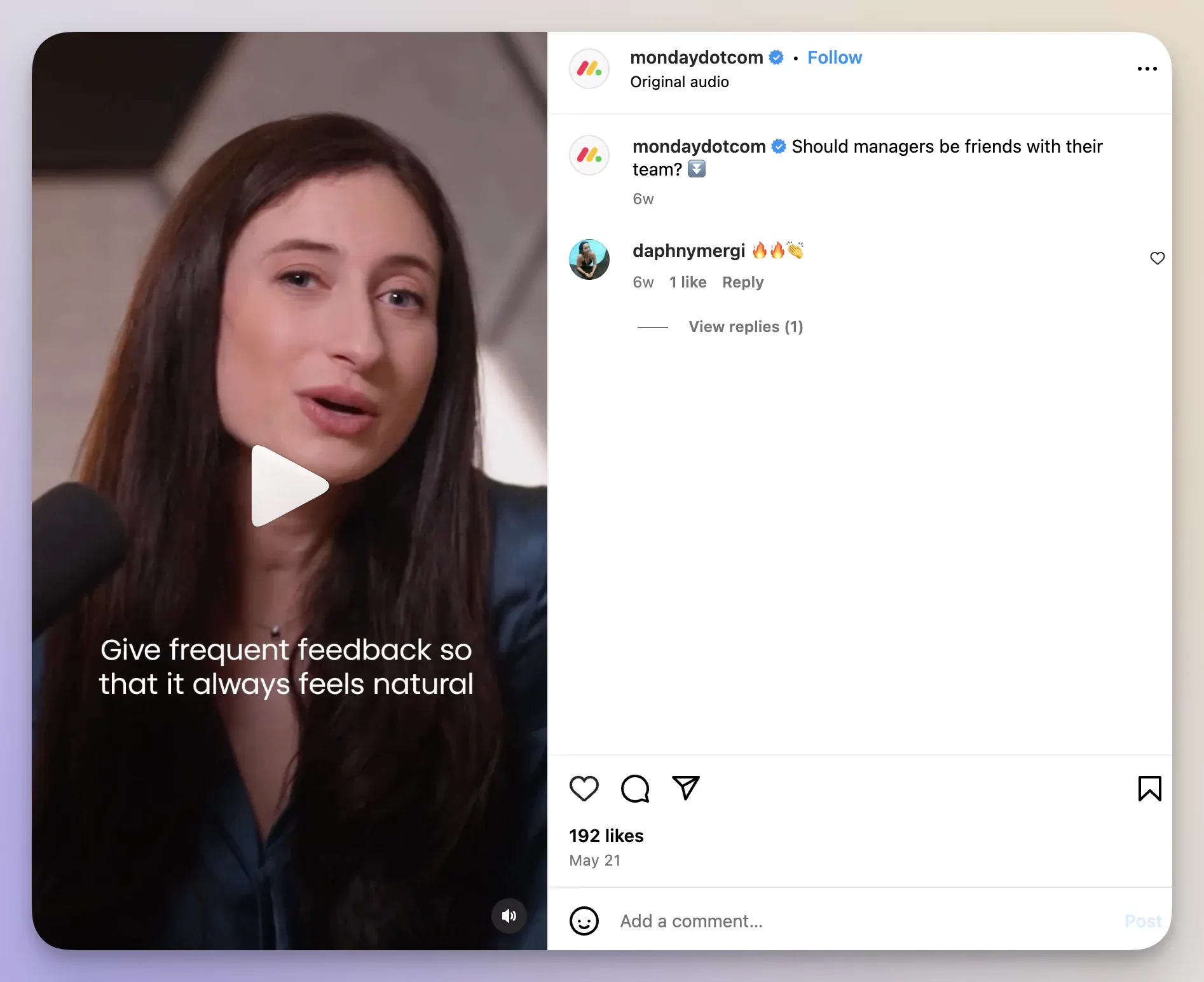
Presenting products/services
Instead of static product images, you can create short-form videos demonstrating your product.
For example, instead of mentioning a benefit, demonstrate steps on how your product solves a problem or brings an advantage.
I love it when brands create product videos on lesser-known use cases. I can discover new features and get more benefits from using their product.
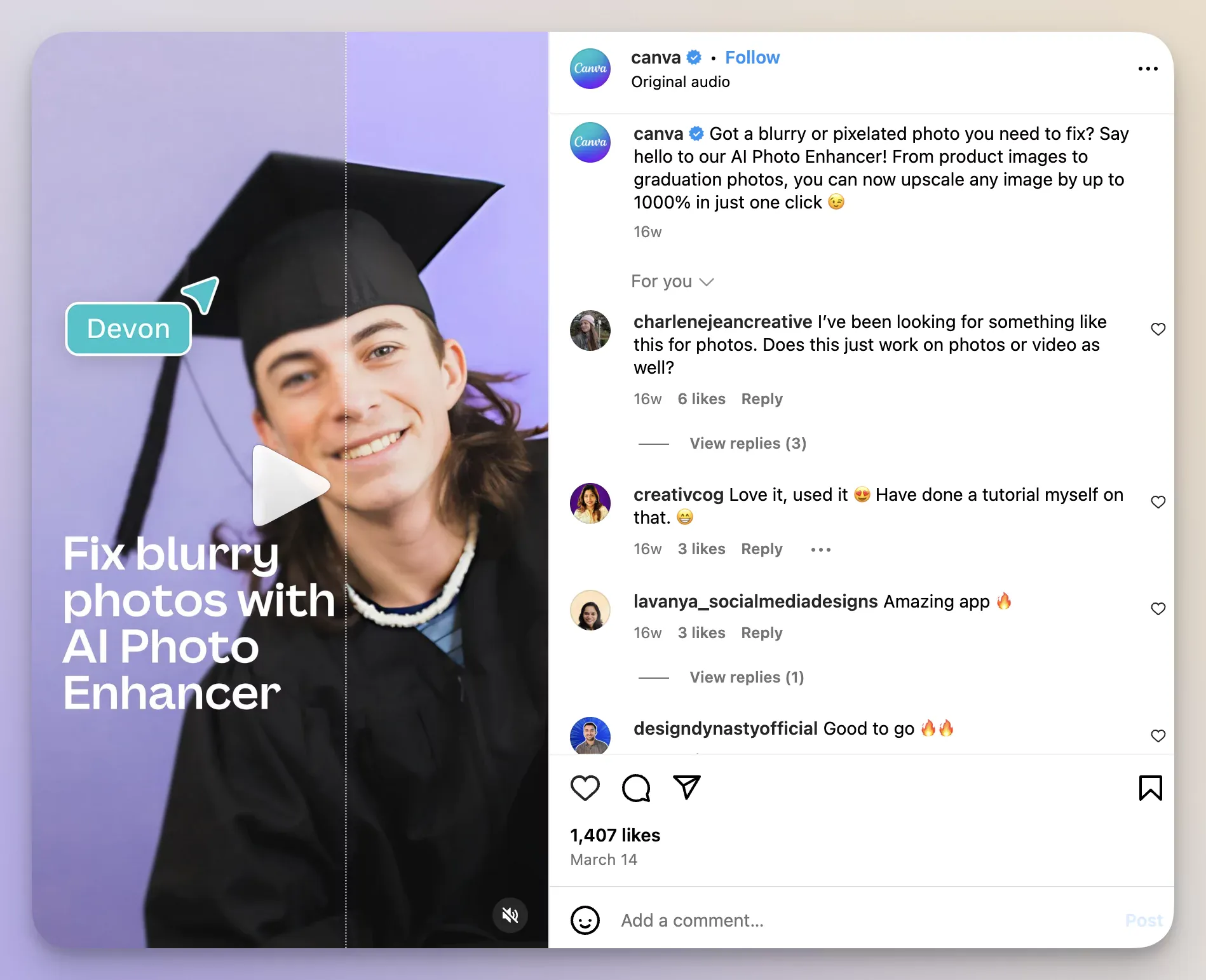
Highlight influencer partnerships
Collabs on Reels can turn out to be high-performing because they are authentic and can lead to more people sharing this content. Three other reasons why they work so well:
- Expanded reach: Reels with influencers exposes your brand to their followers, increasing visibility.
- Enhanced credibility: Influencers act as trusted voices; their endorsement builds trust in your brand.
- Access to niche audiences: Partnering with niche influencers helps reach specific demographics that align with your brand.
To get the most from this partnership, ensure you select the right influencers for your brand. Also, let them bring fresh content ideas to the table instead of dictating everything.

Pro tips for great performing Reels
Sometimes, it’s just about getting the basics right when it comes to Instagram Stories and Reels. Here are five things that will boost your Reel’s visibility and reach.
Keep it concise
Many studies suggest creating short Reels, about 30 seconds long. Short Reels capture attention quickly, as users tend to scroll past lengthy videos. This duration aligns with the platform's fast-paced nature, ensuring your message is delivered before viewers lose interest.
For educational or tutorial content, you can extend the Reel length but keep transitions and visuals engaging.
We also recommend using tools like Socialinsider to keep track of Reel analytics and find the Reel length that works best for your audience.
Stir engagement
To boost engagement on your Reels, consider using these five tips:
- Use captions: Add concise, relatable captions that summarize or enhance your message, catering to viewers who watch without sound.
- Text overlays: Highlight key points, tips, or steps with bold, on-screen text to grab attention and improve understanding.
- Call-to-Actions (CTAs): Include clear CTAs like "Double-tap if you agree," "Tag a friend," or "Check the link in bio" to prompt interaction.
- Encourage comments: Pose questions or start conversations in your Reel, such as “What’s your favorite?” or “Which one would you choose?”
- Pin popular Reels: Keep your most engaging Reels visible on your profile to drive continuous interaction.
Maintain a frequency
Consistency is key for Instagram Reels. Start with defining what this consistency looks like for your brand. Small accounts may choose to publish 1-3 reels per week, while big accounts with larger teams on deck may publish 2-5 reels per week.
Monitor performance and adjust your frequency based on engagement. If views drop, scale back and focus on quality. Remember, consistency is about showing up regularly, not daily.
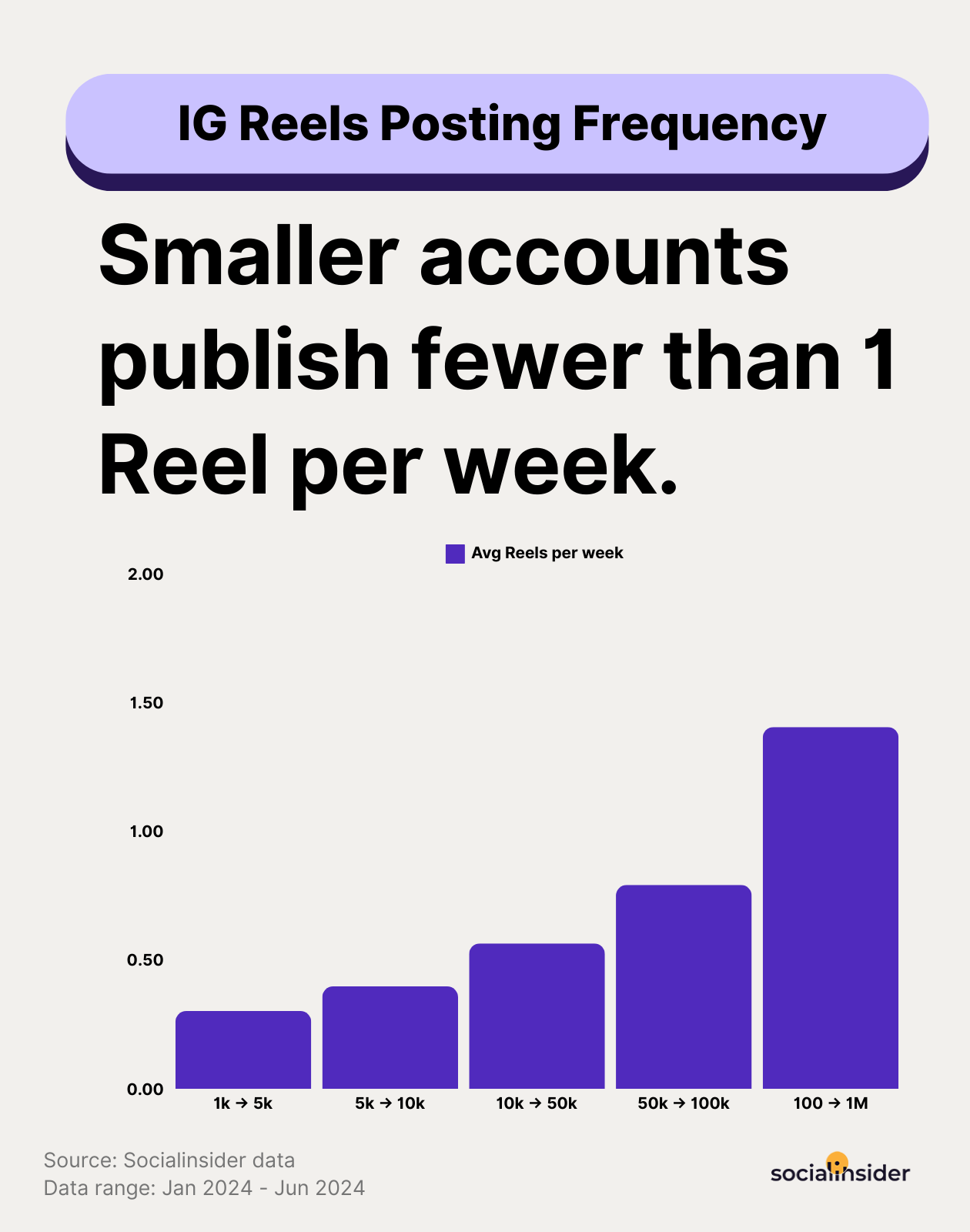
Invest in aesthetics
Blurry or low-quality Reels often don’t get high engagement. Even if you don’t invest in a high-quality camera to shoot your Reels, ensure you use editing apps that improve the quality.
Here are some other tips to make your Reels aesthetic:
- Consistent color palette: Use filters or tones that align with your brand identity.
- Lighting: Opt for natural light or use ring lights for clear, well-lit shots.
- Framing: Keep subjects centered or follow the rule of thirds for balanced visuals.
- Subtle backgrounds: Keep backgrounds minimalistic and clutter-free.
- Creative angles: Experiment with unique perspectives.
Optimize your Reels
How to optimize Instagram Reels:
- Hashtags: Add relevant, niche-specific hashtags to help your content reach targeted audiences. Combine popular and less competitive hashtags for better results.
- Eye-catching thumbnails: Design visually striking thumbnails with bold text or clean visuals to grab attention in your feed.
- Engage quickly: Hook viewers within the first 3 seconds with compelling visuals or action to reduce drop-off rates.
When to post Instagram Stories vs Reels?
The battle between Stories or Reels is not as straightforward as it seems. Here are five situations in which Stories is the clear winner.
Share real-time announcements
Are you testing out a new product feature? Or have you discovered an interesting product use case? While you can create Reels for this, you can build curiosity by sharing sneak peeks in your Stories.
For example, instead of sharing the entire feature and its benefits, talk about how your team thought about the feature. Or what benefits the new feature would bring to your customers.
Get audience feedback
Your customers may have a lot of important advice. It could be about the design of your product or a feature request. They only need a platform to share this feedback
.Instagram Stories are a great way to engage with your customers and get them to talk to you. For example, you can utilize the “Questions” feature for Instagram Story. This allows viewers to respond to your question/statement in the Story itself.
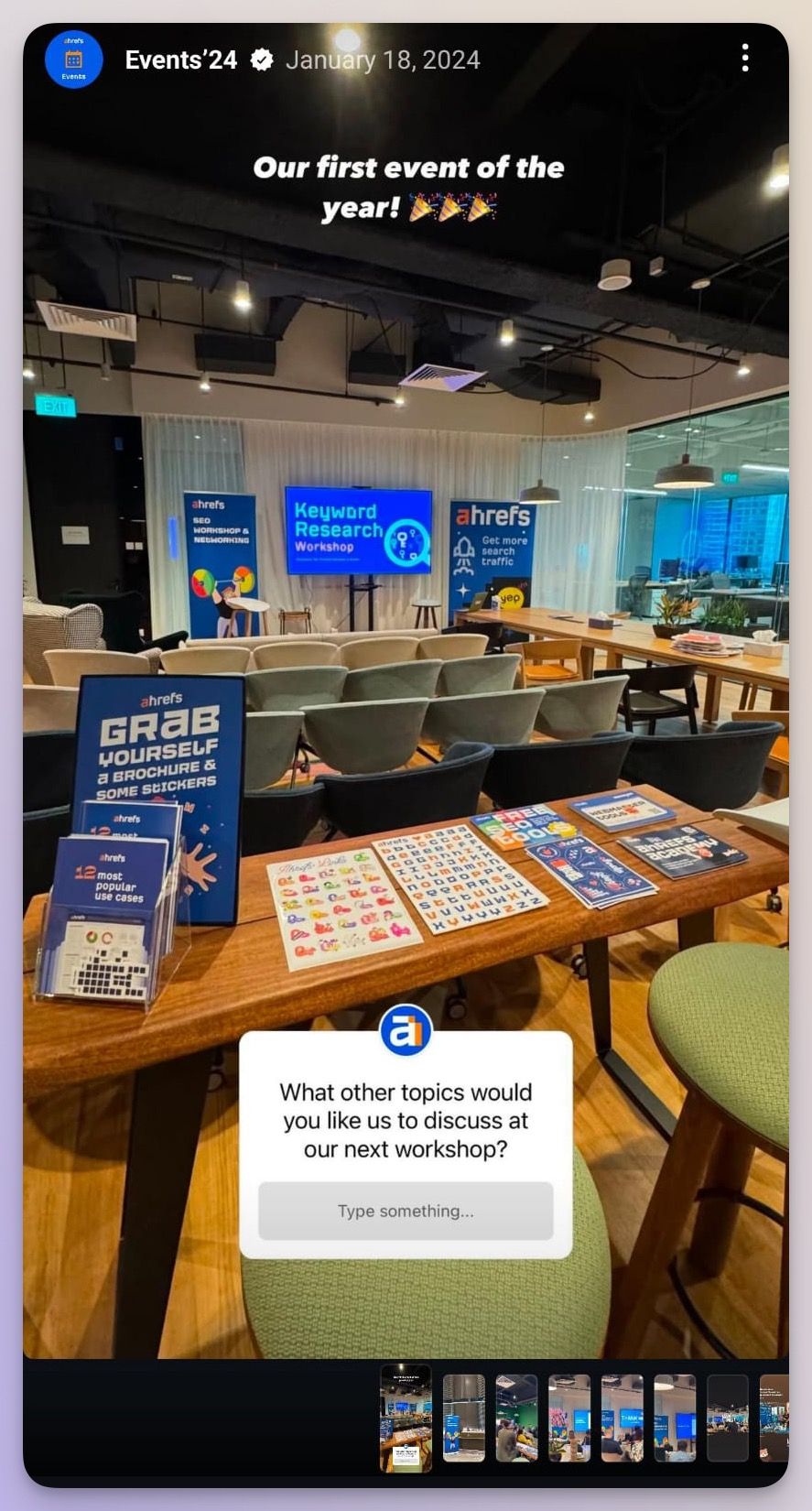
Or you can use the “Polls” feature to let them choose from selected options.
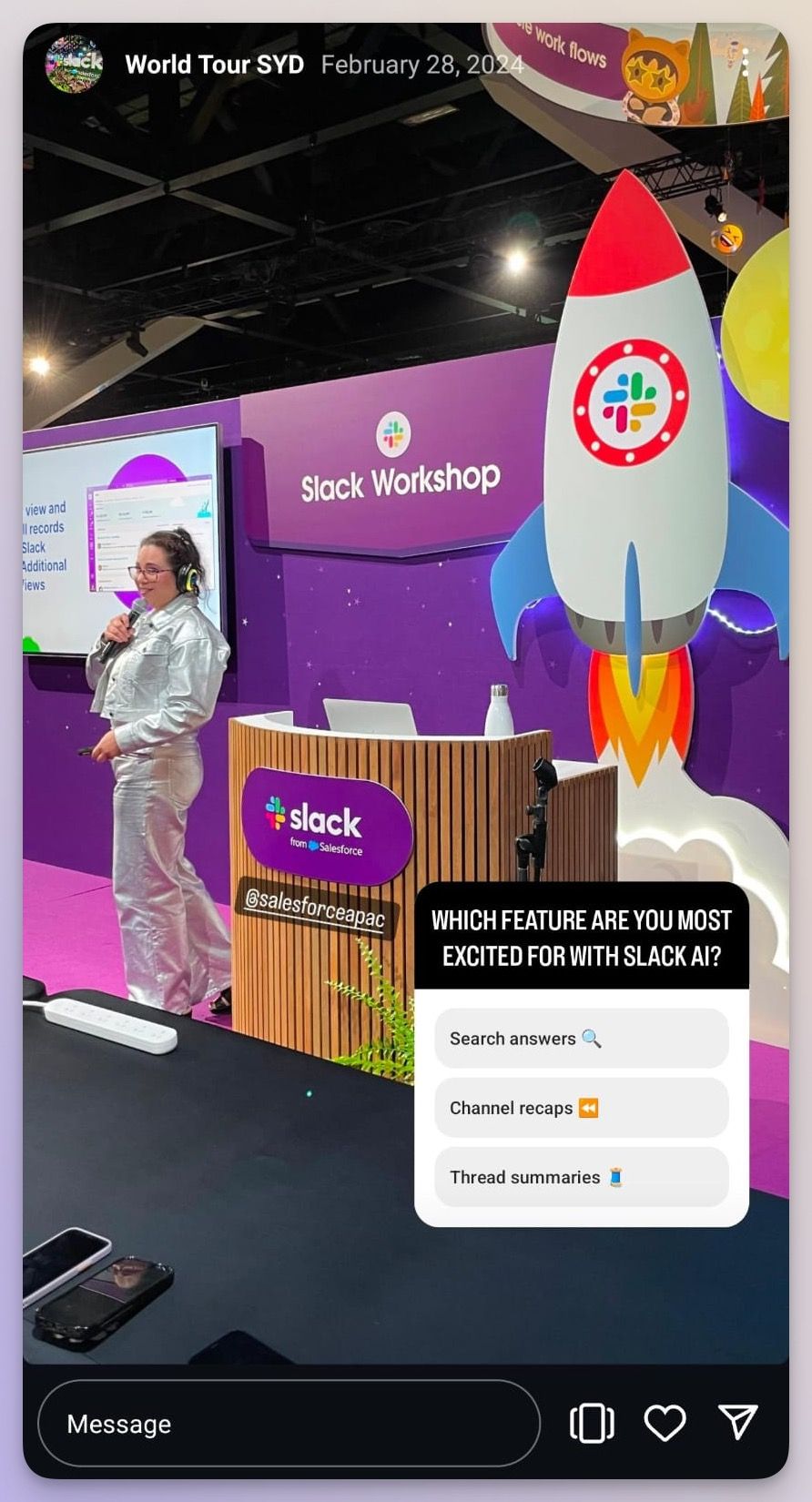
If you want to get their opinion or reaction on something, you can even use the emoji slider in your Story.
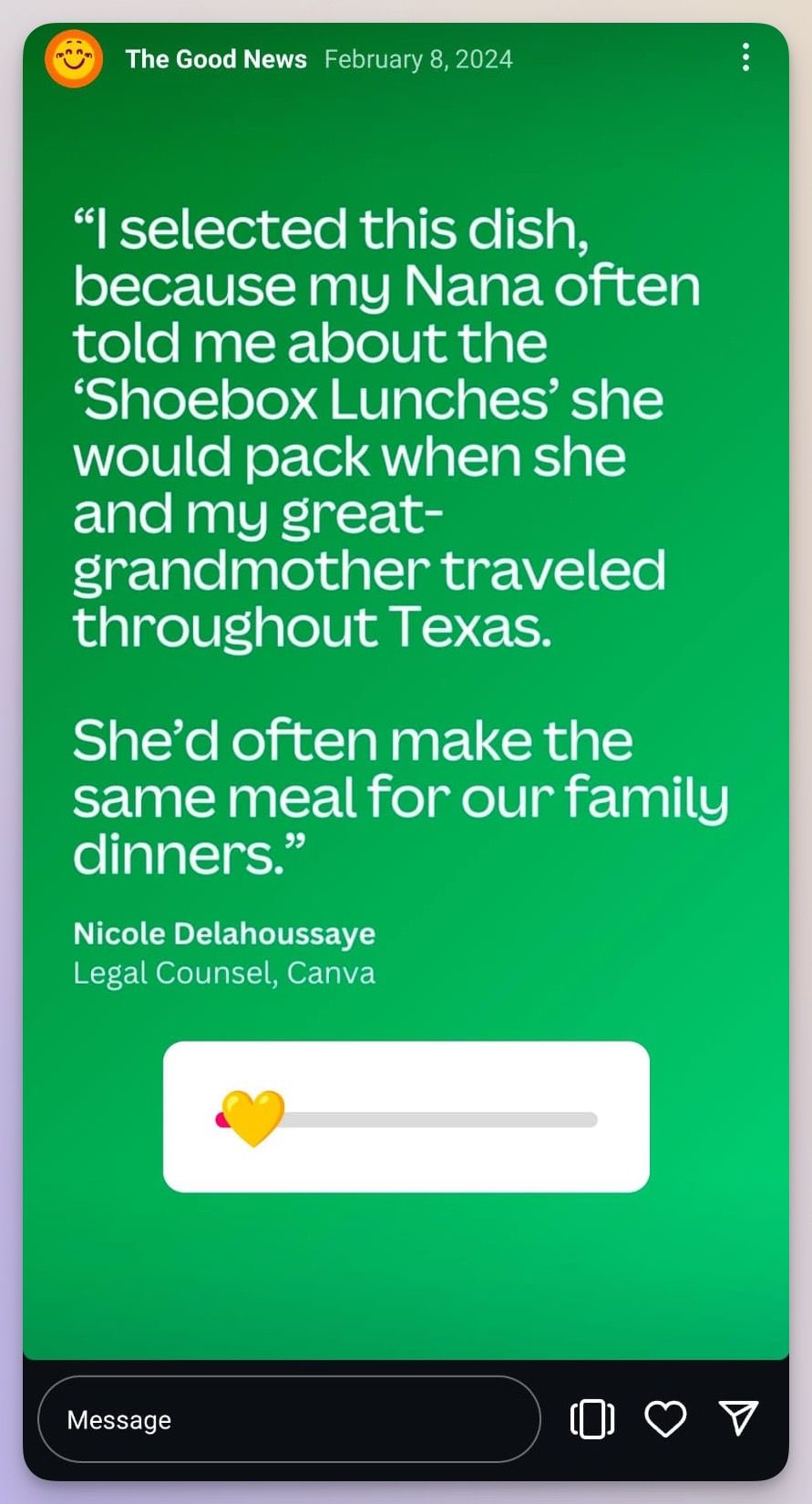
Post time-sensitive offers
Running a Valentine’s Day Deal? Or selling your Premium subscription at a discounted rate for a limited time? These are great deals to share on your Instagram Story.
For example, even if you share a post on Instagram about this deal, you may want to get more people to act on it. This is why 24-hour Stories are great to share on a daily basis till the deal time runs out.
Share UGC
Did a customer share a picture or a small video of using your product? You may not want to turn every UGC into a Reel or a post. But you can share them in your Stories and put them as highlights so people can view them whenever they visit your profile.
It’s also a great way to turn excited customers into brand ambassadors for your company. While this may take a while, you can continue showing appreciation by recognizing their efforts.
You can even create a branded hashtag and ask your audience to use it while creating content featuring your brand. This aids in discovery and makes resharing easy.
Feature behind-the-scenes content
Working on an exciting update? Or cooking a fantastic campaign? While you may not want to put this up permanently on your profile, you can use this content for your Story. Let your audience in on what’s happening at your company.
Here are some content ideas to get you inspired:
- Product-related content: Show how product features are designed
- Workspace tour: Share a look at your office, studio, or creative space.
- Team moments: Highlight your team at work, brainstorming, or having fun.
- Event prep: Showcase the setup process for an event, photoshoot, or launch.
- Mistakes and bloopers: Share funny or relatable moments to humanize your brand.
- Day-in-the-life: Take followers through a typical day at your workplace.
- Exclusive sneak peeks: Tease upcoming projects or launches.
- Celebrations: Share team celebrations, milestones, or small wins.
Pro tips for great performing Stories
Even if your Stories are for 24 hours, you still want them to achieve a goal. Wondering how to use Stories on Instagram?
Here are five ways to create engaging Stories.
Maintain a frequency
Stories are faster to create and easier to post. This means you can post multiple Stories in a day.
The number of Stories depends on how active your audience is. You don’t want to post 10 Stories in a day. This will annoy your audience and possibly lead to them muting your Stories.
Here’s what the retention rate by number of stories per day looks like.

Make Stories interactive
Stories are perfect for engaging your audience. To make your Story interactive, use polls to gather opinions, quizzes to test knowledge, emoji sliders to gauge reactions, and question stickers to invite feedback or spark conversations.
While these tools boost social media engagement, they also create a sense of community among your audience. This keeps them connected and interested in your content.
Focus on design
To create good designs for Instagram Stories, you must take into account elements like:
- Consistent branding: Stick to your brand's colors, fonts, and overall aesthetic for cohesive visuals.
- High-quality images: Use sharp, well-lit photos or videos for a professional look.
- Readable text: Choose clear, bold fonts with good contrast against the background. Also, position text away from edges to avoid being cut off by UI elements.
- Keep it minimal: Avoid overcrowding. Focus on one main message or element per story.
- Dynamic layouts: Use Instagram’s built-in templates or third-party tools like Canva for creative layouts.
- Balanced Colors: Use complementary or analogous color schemes for a visually appealing design.
Use CTAs
To use CTAs in Instagram Stories effectively, use clear, actionable language. Use phrases like “Swipe up to shop,” “Tap the link to learn more,” or “DM us for details.” Incorporate link stickers to drive traffic directly to your website, blog, or product pages. Place them prominently and pair them with attention-grabbing text or arrows.
For accounts with the swipe-up feature, prompt users with CTAs like “Swipe up for exclusive offers” or “Learn more now.”
Save Stories as Highlights
Saving Stories as highlights keep valuable content accessible beyond 24 hours, showcasing key information like products, FAQs, or events. Highlights create a curated, organized profile section that attracts new visitors and engages them.
Instead of saving every Story, ensure you save the important ones or ones that fit your existing Highlights sections.
How to combine Reels and Stories?
Your Instagram strategy needs a fine mix of Reels and Stories. How can you use them together?
Here are three ways to get started.
Mix evergreen and real-time content
Use Reels for polished, planned campaigns and Stories for raw, live moments. For example, if you’re sharing a Reel on a recent conference you organized, share snippets in the Stories of what happened behind the scenes.
Leverage real-time Stories that humanize the experience, such as candid team moments, attendees' feedback, or quick behind-the-scenes shots of your setup process.
Engage and educate together
Even if you sell technical products and primarily share educational Reels, you should still find additional ways to engage your customers. Why? Educational Reels provide great value, but they often miss out on two-way communication.
By creating interactive Stories, in addition to those Reels, you can strengthen communication and foster engagement.
For example, when you create a tutorial Reel covering an important feature, post that Reel to your Story and encourage the audience to ask follow-up questions.
Share Reels to Stories for increased visibility
Want to increase visibility on your Reels? Share them as Stories. Your audience can click on it and view the entire Reel.
Avoid doing this for every Reel, as your audience may get frustrated seeing the same content again.
Instead, identify top-performing Reels and post them as Stories.You can easily view these top-perfoming reels on social media analytics tools like Socailinsider.
- First, you have to add your account to the app.
- From the Posts section, filter by the desired content format - here, you have to select Reels.
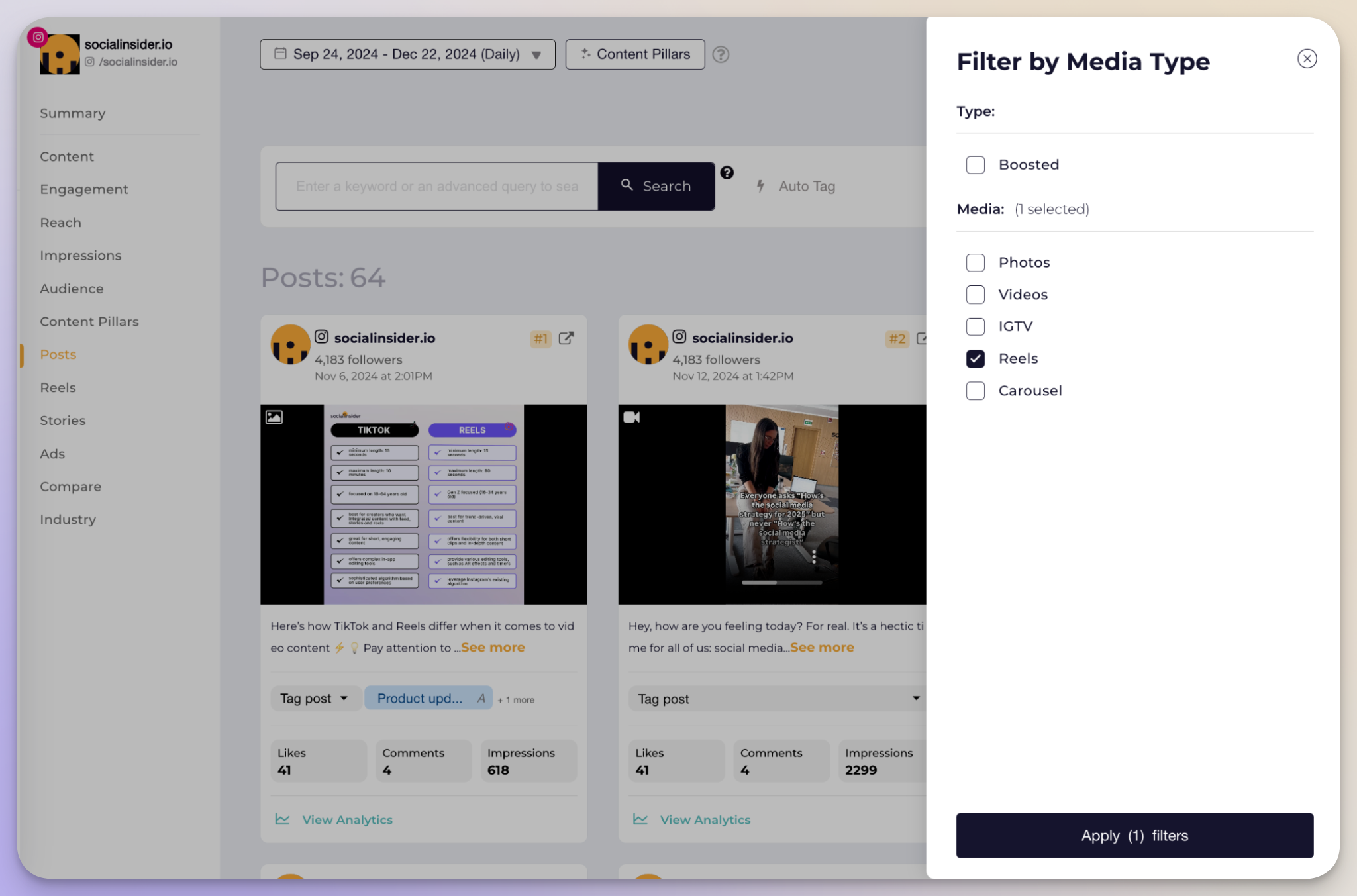
- Then, you'll have your best-performing Reels (displayed by engagement) displayed.
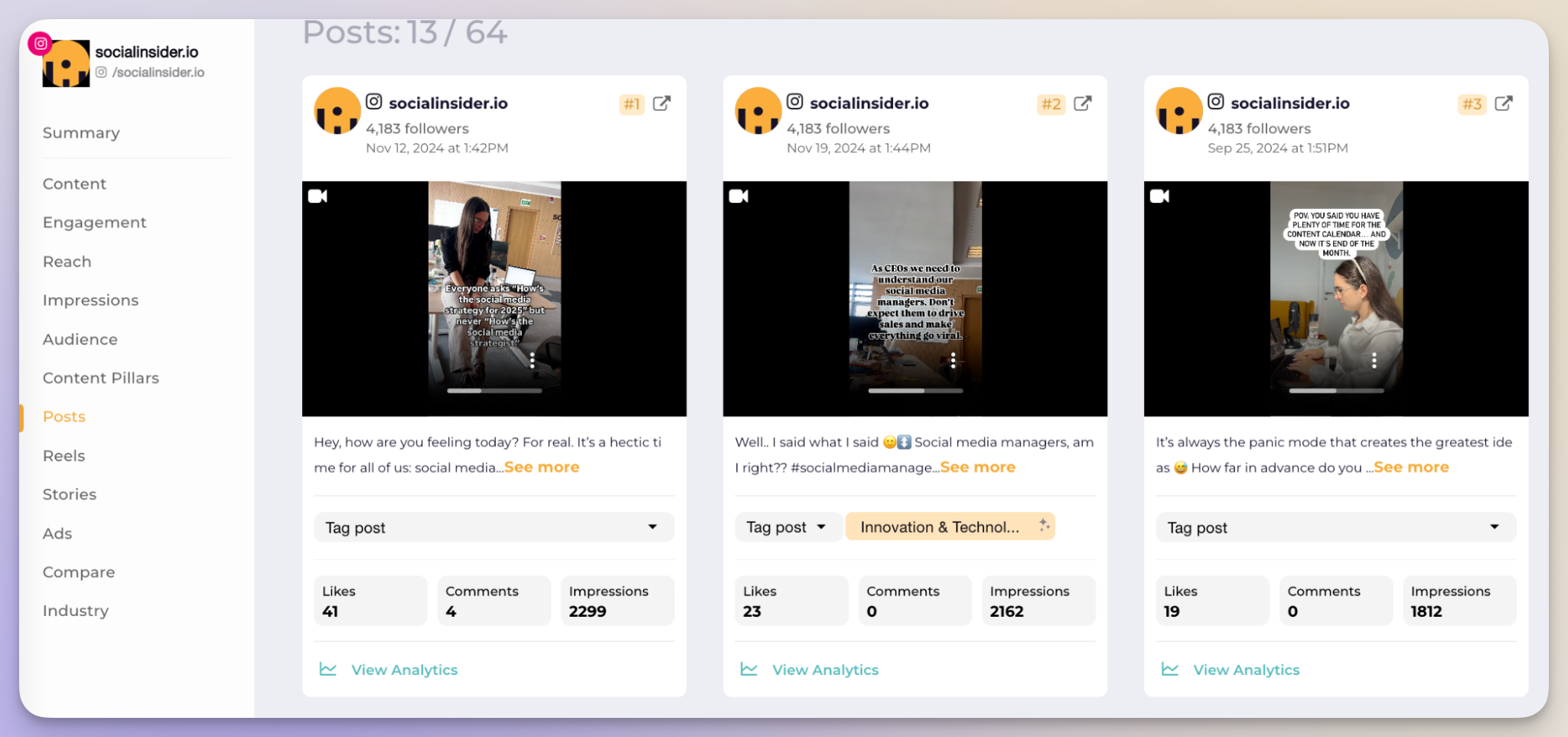
Final thoughts
Reels and Stories both are a powerful content format, each serving different goals. While you may create Reels to boost visibility, Stories are great for keeping your audience engaged regularly.
Follow the tips and strategies in this guide to decide when to use each format. But remember to always experiment to find what works best for your business.
If you are looking for a tool to get analytics on your social media performance, get started with your free trial on Socialinsider.
Analyze your competitors in seconds
Track & analyze your competitors and get top social media metrics and more!
You might also like
Improve your social media strategy with Socialinsider!
Use in-depth data to measure your social accounts’ performance, analyze competitors, and gain insights to improve your strategy.

